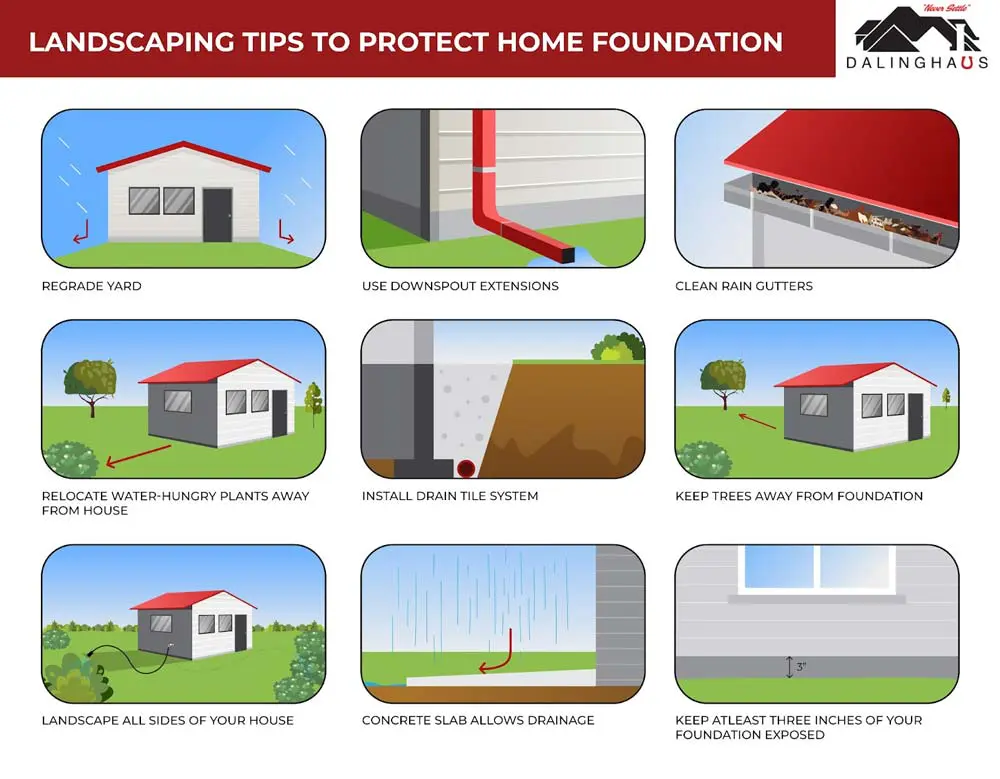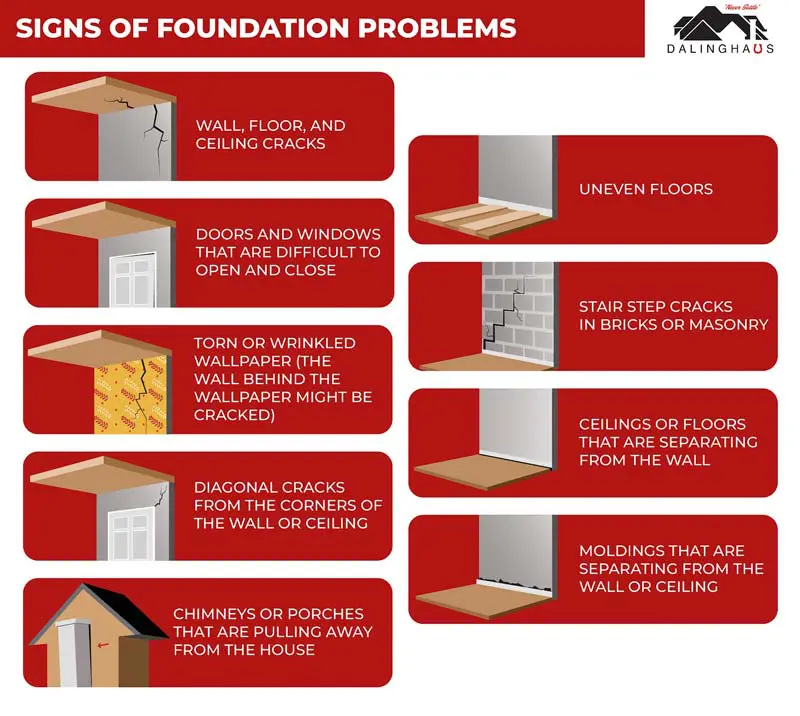Searching for information about landscaping around your house? If so, you’ve landed on the right page because that’s what this article is about. We’re going to go over what you need to know in order to landscape around your house without endangering your foundation.
First Things First: Water Causes Most Foundation Problems
Believe it or not, water is the leading cause of foundation problems. Water can infiltrate the soil around or under the foundation and cause it to expand or erode, depending on the soil type. This creates movement under the foundation that can lead to severe structural damage. Therefore, you must get groundwater around your foundation under control, which will impact how you landscape around your house.
Good Landscaping Won’t Endanger Your Home’s Foundation
Since most foundation problems are caused by water, good landscaping will, among other things, ensure that water can’t build up in the soil around the foundation. A soggy yard can lead to a costly foundation repair bill if you’re not careful. Here are some tips on how to landscape around your house without endangering the foundation:
- Keep trees away from the foundation – Some trees have invasive root systems that can cause tremendous damage to a foundation. It’s best to keep these trees at least 20 feet away from the house.
- Regrade your yard, if necessary – The yard around your home should slope away from the foundation. This will help prevent excess moisture from building up in the soil around the foundation.
- Don’t plant water-hungry vegetation next to your house – Flowers and shrubs might look beautiful next to your home, but if they need a lot of water, you’ll be adding it to the ground around the foundation. This is precisely what you’re trying to avoid.
- Landscape on all sides of your house – This will ensure that you’re not watering on one side only, which can cause problems eventually, especially if your home sits on expansive soil.
- Watch those sidewalks and patios – Concrete slabs should allow water to drain away from the foundation.

Other things you can do that will help prevent foundation problems include the following:
- Install downspout extensions – Downspout extensions are inexpensive and easy to install. They’ll ensure that runoff gets carried away from the foundation before release.
- Clean your gutters regularly – Gutters clogged with dead leaves and other debris can cause water to overflow and run down the side of your house, soaking the ground around the foundation.
- Keep at least three inches of your foundation exposed – This will help you detect any signs of foundation damage.
You should also consider installing a drain tile system. When it comes to foundation waterproofing, nothing beats a drain tile system. A drain tile system isn’t a barrier that keeps groundwater out. It’s a system that prevents excess moisture from building up in the soil around your home’s foundation to begin with. There are two types of drain tile systems: exterior and interior. Here’s how they work:
Exterior drain tile system
An exterior drain tile system is installed around the outside perimeter of your foundation at the footing level. Therefore, it involves some excavation in an existing home. The general installation process is as follows:
- The soil around the foundation is excavated down to the footing.
- A shallow trench is dug and lined with gravel. A perforated drainage pipe is placed on the gravel and covered with more gravel.
- The excavated soil is replaced.
Once the exterior drain tile system is in place, excess groundwater will flow into the drainage pipe via the holes and toward a sump pit. When the sump pit fills with water, a sump pump will turn on and eject the collected water away from the foundation.
Interior drain tile system
An interior drain tile system is installed around the inside perimeter of your home’s crawl space. The installation process is as follows:
- A shallow trench is dug around the inside perimeter of your crawl space and lined with gravel.
- A perforated drainage pipe is placed on the gravel and covered with more gravel.
Excess moisture in the ground will flow into the drainage pipe and toward the sump pit, where it will be expelled away from the foundation via a sump pump.
Common Signs Of Foundation Problems
Common signs a home might have a foundation problem include the following:
- Uneven floors
- Cracks in walls, floors, and ceilings
- Stair step cracks in brick or masonry
- Doors and windows that no longer open and close properly
- Chimneys and porches that are pulling away from the house
- Walls that are no longer in contact with the ceiling or floor

If you notice any of the above – or anything else that seems suspicious – contact a foundation repair professional immediately and ask for an evaluation.
For more information, see Foundation Problem Pictures.
If you’re concerned about the health of your home’s foundation, contact us today to schedule a foundation evaluation. If we find a problem, we’ll give you a repair estimate. We serve Southern California, Arizona, and Nevada.






